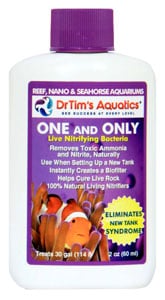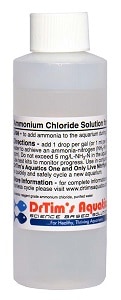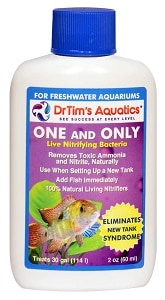Congratulations on the first steps to a beautiful aquarium! The cycling of an aquarium is one of the most important parts to a great start and it is one that cannot be rushed. The tank cycle is the natural bacteria of your biological filter growing and establishing itself ready for you to add fish, but when does this cycle actually finish?
A fish tank cycle is complete once ammonia & nitrite have dropped to zero & nitrates are starting to rise. At this point enough beneficial bateria have established to begin slowly adding fish & invertebrates. From this point keeping nitrates low can be acheived with regular water changes & cleaning.
To help you understand abit more about what the cycle is, why it is so important and how to know when its finished keep reading and find out what the heck Ammonia, Nitrites and Nitrates are too!
Hint: They are toxins to aquatic inhabitants 😉
When is the Aquarium Cycle Complete?
The only way you can truly see what is going on in your cycle is by testing your Ammonia, Nitrites,
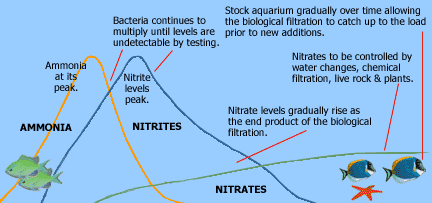
You can see the spikes in the diagram above and once your Ammonia & Nitrites are at 0ppm and your Nitrates are below 5ppm for saltwater aquariums and 20ppm for freshwater aquariums you are good to SLOWLY start adding your first fish. (ppm = Parts Per Million)
To help you track the progress of your aquariums cycle feel free to download this FREE tool I created for you. Just put in the readings from the test kits and the results are plotted on the graph for easy analysis!
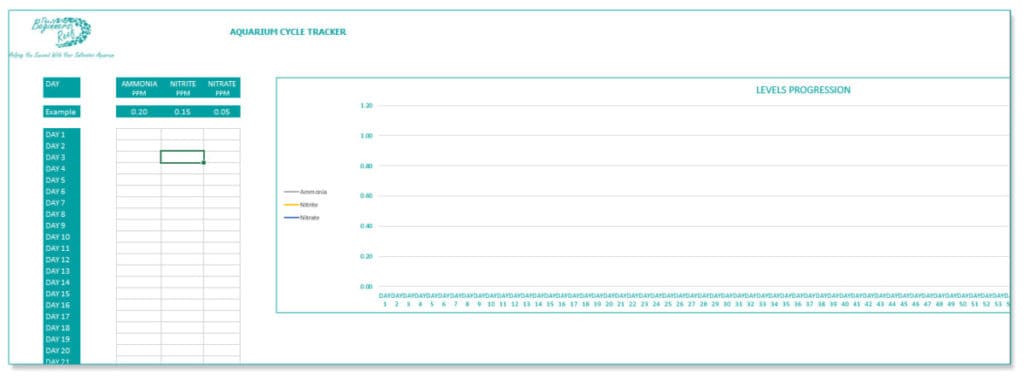
If you are wondering which test kits I recommend you can find out all about my preference in this article:
How Long Does An Aquarium Cycle Take?
Most aquariums take between 6-8 weeks to cycle. The larger the water volume, the longer it can take. Using a live bacteria starter culture can dramatically speed up the process to only several weeks by introducing a large number of nitrifying bacteria to the aquairum and boost the reproduction rate.
The TV shows where they introduce fish with a ‘Cycle Enhancing’ liquid is just pure TV. What they don’t show you is the large number of fatalities in the weeks that follow. It takes time for the nitifying bacteria to mulitply enough to process the bio-load in the aquarium.
Everytime a new fish or fishes are added to the aquarium it take a set amount of time for the bacteria to reproduce in enough numbers to handle the increase in bio-load. At best it may take a week if a live culture is added at the same time.
Some of the most popular bacteria cultures are listed further in this article.
What Is A Fish Tank Cycle?
A tank or aquarium cycle is commonly known as ‘The Nitrogen Cycle’ and it is the process where various strains of nitrifying bacteria consume dangerous toxins in the water and convert them into safer compounds that fish and aquatic livestock can tolerate.
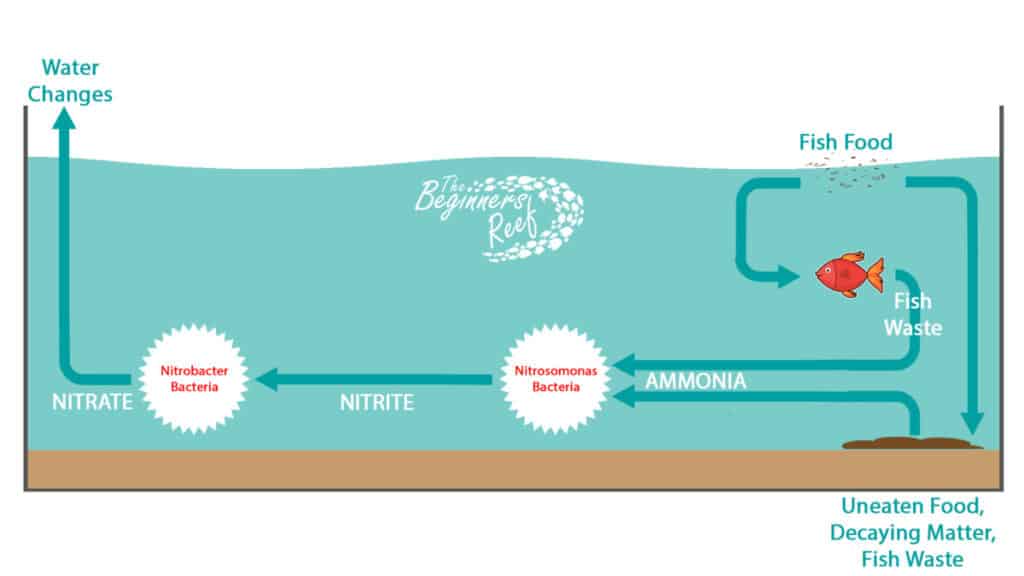
In the wild these toxins are diluted by the huge body of water the fish are living in, however, in an enclosed environment like an aquarium, these toxins can rapidly build and poison all of the tank’s inhabitants. As aquarium owners, it is our job to maintain the balance of having enough bacteria to convert the waste introduced into the water.
Thes toxins are known as Ammonia and Nitrite (Highly toxic to aquatic life) and Nitrate (Far less toxic to aquatic life)
The Aquarium Nitrogen Cycle
What is Ammonia?
Ammonia is released during the breakdown of dead and decaying material, fish excrement, uneaten food, rotting plant matter,
Your aquarium does not, as these items break down they release Ammonia into the water of your aquarium. If it is not taken care of, it will cause problems as Ammonia is highly toxic to your fish.
Luckily, you have Nitrosomonas Bacteria that will naturally grow as part of the biological filter matures, this strain of bacteria metabolize Ammonia and turn it into Nitrite.
What is Nitrite?
Nitrites are the next part of the Nitrogen Cycle. As the Nitrosomonas Bacteria consume the Ammonia compounds, they convert it to Nitrites, but Nitrites are still highly toxic to fish.
As your Nitrogen Cycle continues, you will eventually have Nitrobacter Bacteria begin to grow and multiply within your tank which then consumes and metabolizes the Nitrite compounds and converts them to Nitrates.
What is Nitrate?
During the 3rd part of the nitrogen cycle, the Nitrobacter Bacteria are now consuming the toxic nitrites and converting them into Nitrates. Nitrates are much less toxic for fish and we are nearing the end of the nitrogen cycle.
As the Ammonia has begun its spike and begin to drop to 0ppm, the Nitrites have spiked and dropped to 0ppm and you are starting to see the rise of Nitrates, your cycle is nearing completion.
Nitrates help to feed algae, which are then fed off by fish, snails,
The final part of the Nitrogen Cycle is the Nitrates being turned into Nitrogen gas. This is a slow process and usually will require the nitrates to be removed before they have a chance to build up. The best way for Nitrate removal is regular water changes.
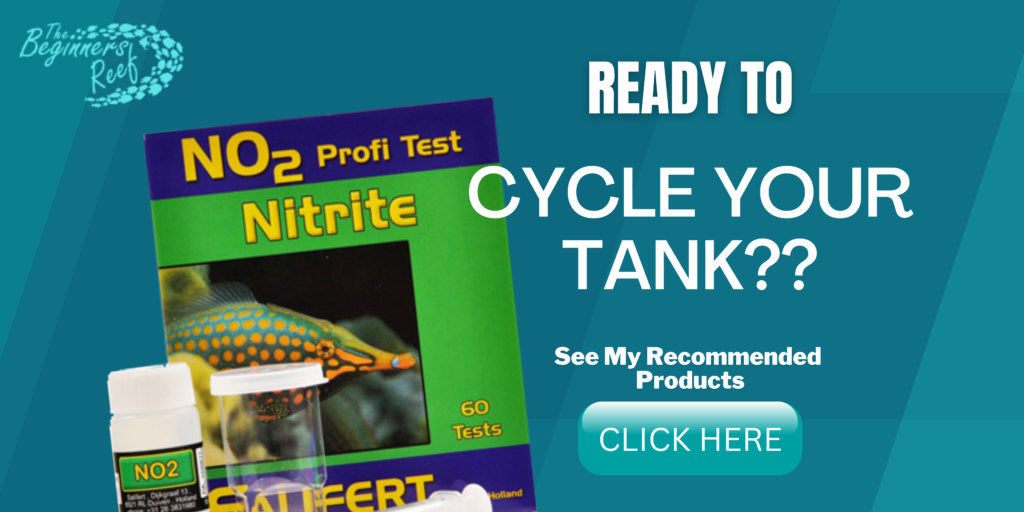
Why Do You Need To Let An Aquarium Cycle?
The nitrogen cycle is in a constant cycle within your aqaurium, it never stops. The initial cycle needs to be completed before adding livestock to ensure there is enough bacteria to cope with the excrement and uneaten food the fish will add to the tank.
Think of it like you are going to a concert with 50,000 people. If you get there and there are only 5 Porta-Potties it’s going to get ugly! However, if you arrive there and there are 1,000 Porta-Potties then everyone is going to be accommodated for.
This is what is happening during your tank’s cycle. The building of enough Porta-Potties to support the livestock that has just arrived. The more fish you add, the more bacteria need to multiply.
This is the reason you want to add your livestock slowly, or you could risk having a bio-load too large for your bacteria to cope with.
When you begin a new aquarium you need to let the tank cycle and build this natural biological filtration before you
This is why you hear ‘Patience’ mentioned a lot in the saltwater aquarium hobby. Patience gives your tank the time it needs to multiply the bacteria to maintain a healthy balance.
How Do You Begin An Aquarium Cycle?
To begin an aquarium cycle many aquarists use Live Rock from a matured aquarium and let the bacteria multiply to their new size tank and bio-load, or if starting with a dry rock and new sand, a live bacteria culture like Dr Tim’s One & Only can be added to seed the sterile aquarium and boost the cycle.
Below are the most popular live bacteria cultures for initially starting an daquarium cycle, but also help increase bacteria when adding new fish or after a long power outage when bacteria has died off.
All Links to Amazon.com
A further option is to add a raw shrimp to the aquarium and allow it to decay and breakdown. This will release ammonia and begin the cycle. This is how I started the cycle on my reef tank:
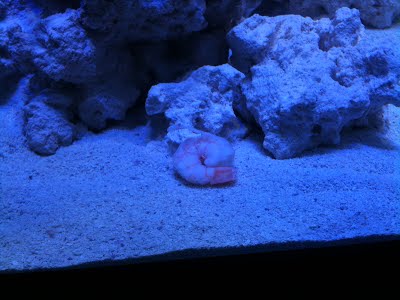
Any of these ways will begin to get the ammonia increasing and begin the cycle.
Can You Use Fish To Cycle An Aquarium?
A lot of people recommend using some ‘Hardy Fish’ like Guppies if you are setting up a freshwater aquarium or Damselfish for a Saltwater aquarium. This is an old and cruel method. High levels of ammonia and nitrite will stress the fish and potentially kill them. A bacteria culture is more humane.
The other main problem with using fish like Damselfish especially, is that they are a VERY territorial species and very hard to catch. If you put in two Damselfish as your first two fish they will terrorize any new fish you add in until they are dead.
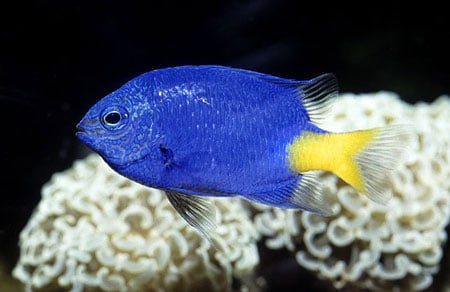
I can guarantee you will have to remove all of your aquascape to catch and remove them, so it is just not worth it. Use one of the methods above and be patient. Patience will always give you the best long term results in this hobby.
If you are reading this AFTER adding in some Damselfish, I highly suggest you take of read of this article:
How To Catch Fish In An Aquarium? The Best Methods!
How Often Can You Add Livestock To A New Aquarium?
You can begin to slowly add fish to a new aquairum once ammonia and nitrates are zero and nitrates are slowly rising. Only add a few fish at a time with a week or two inbetween each addition to allow the nitrifying bacteria to multiply to meet the increased bio-load that has now been added.
Once you get the results confirming the nitrogen cycle is complete you can start SLOWLY introducing your first livestock.
In my experience and that of many other seasoned aquarists, I find it better to be little and slow. I recommend you add 2 or 3 hardy, non-territorial fish to begin with.
Below are some great fish suggestions for a saltwater aquarium:
- Green Chromis
- Ocellaris Clownfish
- Firefish Gobies
- Bangaii Cardinals
I would also recommend slowly adding some Clean-up-Crew to help keep the tank clean.
- Nassarius snails are a great snail as they can flip themselves if they tip over
- Turbo Snails are great for algae but cannot flip themselves
- Hermit Crabs are fun to watch but beware of larger snails with them. They will overturn them and steal their shell!
- Cleaner Shrimp are good for clean up and are hardy
I would only add a couple of animals no more than once per week MINIMUM.
I have an article HERE on the Best Reef Tank Algae Eaters
Here is an example of how I would begin to stock a saltwater aquarium over 30 gallons:
Week 1:
2 Clownfish
5 Nassarius Snails
Week 2:
2 Firefish Gobies
1 Cleaner Shrimp
Week 3:
1 Yellow Watchman Goby
1 Six Line Wrasse
5 Turbo Snails
And so on.
While your tank is cycling it is a perfect time to begin planning your livestock list depending on the size of the aquarium you have. You can then see which are the best to add first with the most territorial species last.
Take your time and you will give the biological filter time to catch up and stay on top of the nitrogen cycle. Once you start adding livestock, begin your regular water change schedule of 10% volume every one or two weeks depending on how high your Nitrate levels become in that time. No more than 5ppm will keep your water and livestock happy and healthy.
Recommended Aquarium Water Parameters
To help you in the first few months of your new aquarium here is a table of the recommended water parameters you should try to maintain for optimum fish health with regular water changes:
| PARAMETER | FRESHWATER | SALTWATER |
|---|---|---|
| TEMPERATURE | 75 – 80°F or 24 – 27°C | 78 – 80°F or 25 – 27°C |
| PH | 7.0 – 7.8 | 8.1 – 8.4 |
| SALINITY | N/A | 1.023 – 1.025 |
| AMMONIA | 0ppm | 0ppm |
| NITRITE | 0ppm | 0ppm |
| NITRATE | <50ppm | <5ppm |
Further Questions
My readings seem to be good after 2 weeks. Is my tank cycled?
From experiance, probably not. If you have a used a Nitrifying Bacteria like Dr Tim’s to speed up your cycle then you may be nearing the end, but its alywas better to wait a couple more weeks and keep testing every day or so to make sure.
Once you see no Nitrites and Ammonia and some Nitrates, then you are good to go.
Do I have to use a commerical product to begin my cycle?
Not at all. I used the frozen shrimp method but it took a long time for my tank to cycle. On my next reef tank I will use Dr Tim’s and see how fast it really cycles.

